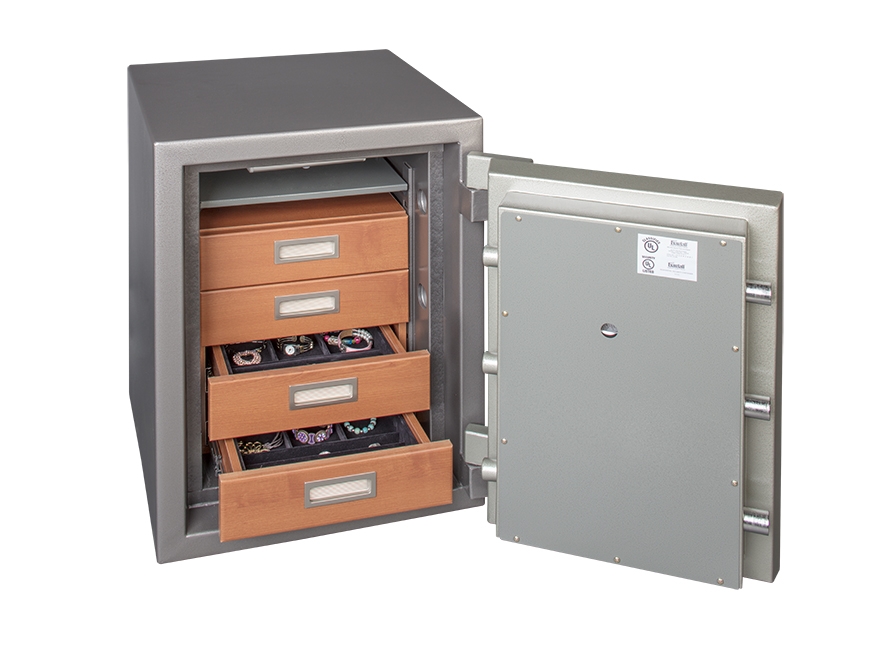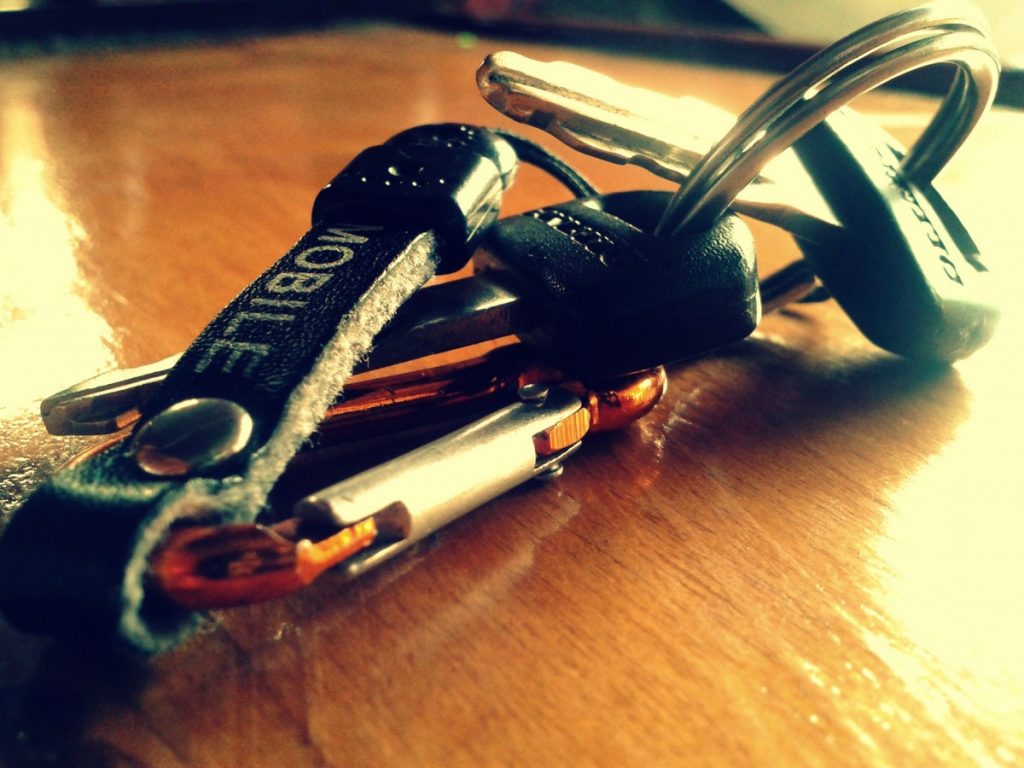Each year, the FBI tracks extensive statistics for crimes occurring in the United States. In addition to tallying the number of offenses, they also track the damage done by the crimes themselves. In 2017, the latest year for which detailed statistics are available, the average burglary costs property owners $2,416. At Northeast Security Solutions, we believe in a security approach that makes experiencing this loss as unlikely as possible. However, we also believe in creating a plan for minimizing loss in case a break-in does occur. In this post, we share some tips to keep damage from break-ins as low as possible.
We will begin with tips for keeping your valuables out of the eyes (and hands). After all, minimizing loss involves maintaining your most valued possessions. We will also discuss storing weapons safely. If a burglar finds a weapon before you get home, the damage experienced can reach far beyond any dollar amount. Finally, we will also examine security equipment that you can install in case of a break-in. Early detection of a crime can certainly lower the damage done during the act. Let’s begin with a look at keeping your most prized items away from the eyes — and hands — of thieves.
Keep Your Valuables as Hidden and Safe as Possible
During a break-in, thieves have a few things in mind at all times. First and foremost, they know what they wish to find. Thieves prioritize jewelry, cash, electronics, and expensive medications that they can sell on the street. Knowing what items you have that burglars may wish to snatch can help you prepare for a potential crime in your own home. Furthermore, burglars also have a “clock” in their mind that ticks while committing a crime. Thieves only want to spend a few minutes in a house at most before escaping. This means that the longer it takes to access valuables, the more likely thieves will be to settle for taking only easily accessible items. Keeping your most valuables items away from thieves for as long as possible goes a long way towards minimizing loss experienced during a burglary. Let’s look at some specific tips to make this happen.

Many homeowners use a safe, such as this one by Gardall, to make their valuables hard to access in case of a burglary.
Avoid Putting Valuables in Easy-to-Find Locations
Last year, Georgia Fox affiliate Fox 5 published the results of a survey that they gave to 99 convicted burglars. The survey included a variety of questions about how burglars carried out their crimes. Burglars gave candid answers about how they broke in to homes and what they looked for. Overall, burglars shared that a “bedside drawer” was the best place to find valuables. Of course, keeping jewelry, money, and credit cards together in an easy-to-remember location may be convenient for homeowners. However, burglars also find this predictability convenient. We advise against making your bedroom a one-stop shop for burglars. If you do want to keep valuables in one place, we recommend making it a location that also hides these items and locks them up, as we share in our next tip!
Use a Safe to Keep Your Valuables Out of the Wrong Hands
Putting your most valued and irreplaceable possessions in a safe can add security in a couple ways. For one, many safes can help you hide valuables. Wall safes, for example, attach to the studs of your wall. Then, homeowners cover the safes with a picture or other hanging. Unless burglars start ripping pictures from your walls, this can keep a thief from ever seeing the items you least want found. Additionally, even finding a safe still requires extra work to get to the items inside. If you follow our 10 Best Practices for Safes, then that means you’ve also chosen the right safe for your home and installed it properly. Doing so can prevent burglars from easily hacking into your safe or carrying it away.
We also recommend keeping weapons locked away in a safe. A burglar finding a weapon creates a huge threat if you or a family member returns home with a thief in the house. We offer specific safes for guns, that come in all shapes and sizes. Locking up your weapons can help with minimizing loss due to a break-in, and help keep everyone safe should you experience a crime. Now, let’s look at a way to help secure items too big to hide or keep in a safe.
Mark Electronics and Items that You Cannot Hide
Of course, not all valuables can fit in your safe. Computers and television sets will generally remain in plain sight at all times. However, using an engraving pen to mark your valuables with your name and phone number can make a burglar’s life harder in a couple ways. For one, thieves often have a difficult time selling engraved products. Homeowners ask their local police departments to stay on the lookout for these items, and may even visit local pawn shops and used electronics stores to track down items lost in a burglary. These shops often receive visits from the police in search of stolen property and, in some areas, shop owners must report engraved items to the police. Therefore, many burglars attempt to avoid this hassle altogether.

Leaving spare car keys in easy-to-find locations makes it more likely that a home break-in will lead to a stolen car as well.
Keep Spare Car Keys Out of Burglar’s Hands
When we discuss minimizing damage from a burglary, we should certainly mention watching out for most people’s very most expensive possessions: their cars. Many homeowners leave spare car keys hanging up next to doors or in kitchen drawers. Burglars often take these keys in the hopes of easily stealing a car in the near future. We recommend keeping spare keys locked up or on your person whenever possible. Thieves can be quite messy, and the time directly following a home break-in can often be hectic and chaotic. Among all the confusion, missing keys often go unnoticed. Keeping these keys in a safe or on your person can help alleviate this danger. Now, let’s take a look at a couple services we offer that can help lessen the damage done by a burglary.
Install an Alarm System to Monitor Your Home
In our post Tackling Ten Common Home Security Myths, we discuss some of the reasons homeowners feel reluctant to install a security system in their homes. Many of our customers find themselves wary of this new addition to their home at first. After all, the majority of homeowners find older security systems difficult to use. Attempting to operate these systems can make the headaches of false alarms more difficult to avoid. Additionally, long-term monitoring contracts that may keep homeowners on the hook for security monitoring costs for several years also turn many customers away. However, modern security equipment has gotten quite easy to use and has gotten more effective than ever. Furthermore, a few companies (ourselves included) even offer security monitoring with no long-term commitment. If you find yourself hesitant about adding home security, we encourage you to read the post linked above.
The blaring siren and impending police response created by an alarm system can greatly assist in minimizing loss due to a home break-in. As we already pointed out, thieves have an internal clock ticking while committing a burglary. The activation of a security system can make this clock tick much faster. In fact, 60% of the respondents to the survey we referenced earlier claimed that they would leave a home immediately if an alarm siren sounded upon breaking and entering. This fact makes installing an alarm system one of our top home security tips. Now, let’s look at one more type of security equipment to help alleviate the damage done during a break-in.
Use Security Equipment with Video Capability
Capturing an image can go a long way towards recovering stolen goods if a thief ever visits your house. We’ve discussed installing home surveillance systems in several of our posts up to this point. These systems allow you to look in to your home remotely with a smart phone or computer at any time. Additionally, a professionally-installed surveillance system will store video on a recorder. This will provide you with several weeks of video recorded 24 hours a day, 7 days a week. If anything does happen to your home in your absence, you will always have the ability to review your video and review the events surrounding a crime at your home. Finally, 66% of the burglars from the Fox 5 questionnaire stated that visible cameras would prevent them from attempting a break-in altogether.

Image-capturing motion detectors, such as this model by Interlogix, capture an image upon activation that can help our central station verify a burglar alarm.
Additionally, we offer security equipment other than surveillance cameras that capture video. For example, video motion detectors, like the one pictured, captures an image upon activation. Our central station can see this image when they receive your security system’s alarm alert. If a burglar is present, the central station can then tell the authorities that they have a verified alarm event. This can lead the police to respond to this alarm more quickly than if they had received a call about a non-verified alarm. We also offer Alarm.com doorbell cameras to provide additional video monitoring of your entry door(s). These cameras allow you to view live and recorded footage of anyone who approaches your door, and can even send live video alerts upon detecting motion. This allows you to potentially catch a thief snooping around before they even enter your home.
Minimizing Loss with a Complete Plan to Thwart Burglars
We hope that this post has given you some ideas for minimizing loss that comes with home crimes. If you have any questions about the material in this post, we encourage you to contact us. We provide free site surveys for homeowners. While on site, we can work with you to address any security concerns you may have. Additionally, we can make our own suggestions based on our observations. Together, we can create a plan for minimizing loss associated with a potential break-in. By taking smart security steps, we can work to keep your most valued possessions as safe as possible.
